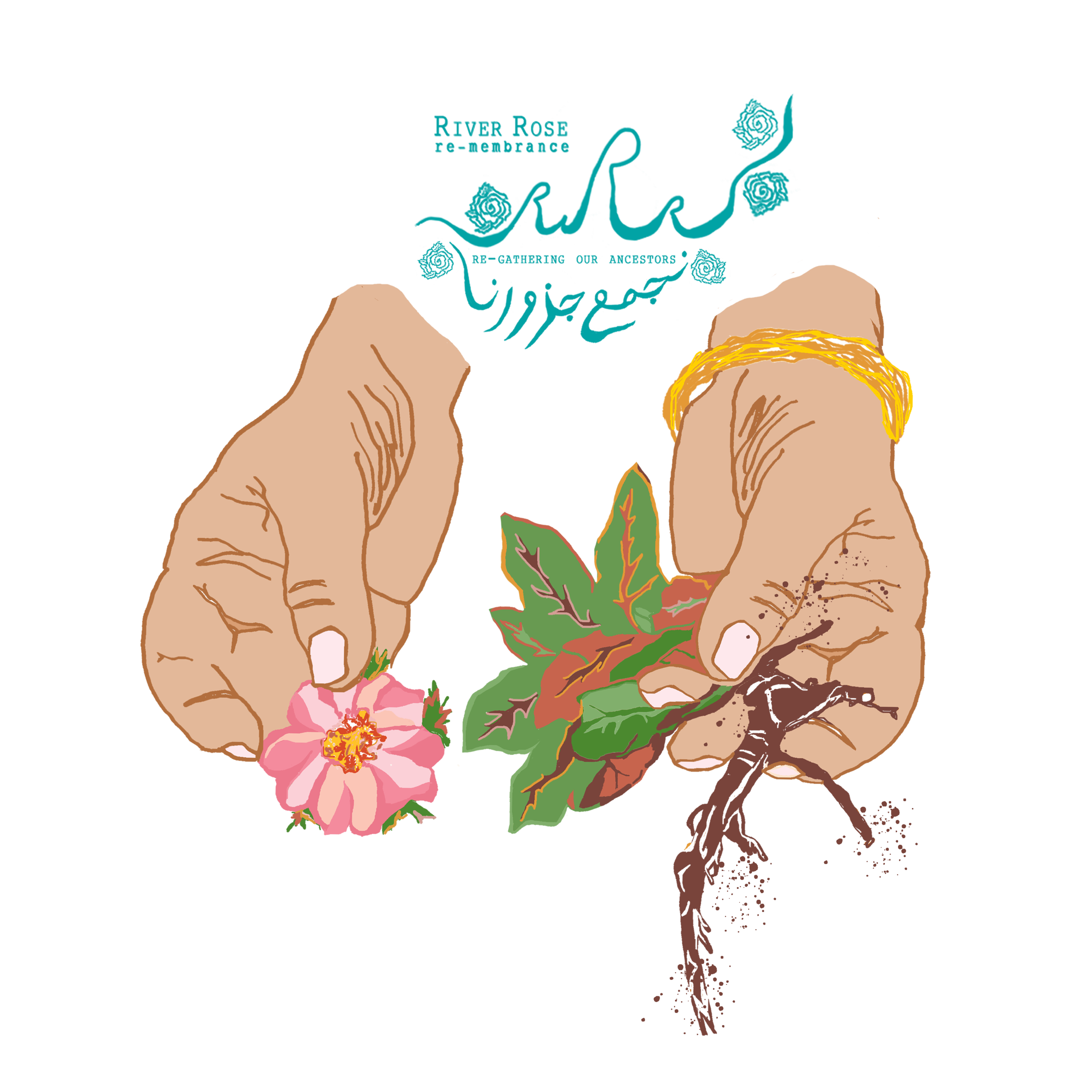Babonaj
Written by, Salma Al Atassi
I like to call this our Heal-All plant for it’s diversity of uses
Botanical Name: Anthemis nobilis/ Chamaemelum nobile—usually referred to as Roman Chamomile. Matericaria chamomilla/ M. recutita/ Chamomila recutita—usually refered to as German Chamomile.
Region: ‘Roman Chamomile’ is what is most commonly found in Mediterranean region, whereas German Chamomile is more common in Western and Northern Europe.
Common Names: baboonaj, babonej, babonag, babonak, chamomile, Roman chamomile, German chamomile.
Actions: anti-inflammatory, nervine, warming bitter, diaphoretic, vulnerary, antisposmadic, carminative, anti microbial
Dosage and Preparations: This plant can be used dried or fresh, depending on the availability. The common tincture preparation for dried would be 1:5 in 40% 1-4 ml a day or physical uses and 1-2 drops for more spiritual uses. For a tea I would steep a pot for at least 20 min or overnight with 1-3 tablespoon of herb to a litre of hot (not boiling water) and drink 1 cup 2 times a day or as needed.
Chamomile holds a very special place in my heart as it is the first herb I was introduced to. My mom always says that despite being a very cute baby, I was incredibly anxious and would cry constantly. When I was about 40 days old, my teta (grandmother) suggested that I be given some baboonaj to help me quiet down and sleep. Perhaps it worked too well, because my mom says that it completely knocked me out. In fact, I became white as a sheet. Eventually I awoke and the colour returned to my face and I was giggling. This tells you what a wonderful ally chamomile is for young ones as well as the elderly.The power that comes from these small flower heads is incredible. Seeing baboonaj in nature says a lot about this plant: the way it flourishes in the arid climate of the Mediterranean, despite how small or fragile it may appear, the way it survives in a very harsh climate, in poor soil conditions.Not only is chamomile a wonderful ally for sleep, it has also been my go to plant when I have struggled with anxiety and depression. Especially when fear is involved. Chamomile is also effective when anxiety or stress cause digestive problems. For situations where there is loss of appetite, indigestion, gastric ulcers, colic or diarrhea this is a wonderful ally as it relaxes and tones the nervous system. An antispasmodic herb, chamomile works on the peripheral nerves and muscles to relax the whole body, thus easing muscle cramps. It also works by soothing the walls of the intestines, helping with the elimination of gas.
It makes for a wonderful late night tea or even an infusion added into bath water for anxious children or adults. It can also be used to soothe teething infants by adding it to their gums or drinking it and nursing the child.Babonaj’s powerful essential oils and anti inflammatory properties are also helpful with skin conditions. The essential oil added into a steam inhalation works wonderfully for inflamed mucous membranes in the sinuses and lungs. Its antimicrobial properties help the body resist pathogens. As a nervine it is really perfect for a cold or flu that is getting in the way of sleep. Using warm chamomile tea bags, or a warm infusion in an eye cup is a wonderful and really effective remedy for pink eye.This past winter was really rough on my skin, so I made a salve for myself and loved ones using chamomile, calendula and comfrey leaves. It was very soothing for my lips and hands. As a child my mom would wash my hair with chamomile tea to strengthen it and help eliminate dandruff. I also know people who use it to lighten their hair and add it with henna to make a lighter colour. For the latter I would recommend testing it out before doing your entire head.As you can see there is a wide array of uses for this plant that are safe for all. However, for people with allergies to the Asteraceae family, such as ragweed or dandelion, it is not recommended to use this plant .When I sit and meditate about chamomile I immediately feel the warmth, and bright light of the sun. So it is no surprise that in Kemetic tradition Chamomile has been noted for its use and its association with the sun god Ra. In Akkadian, Assyrian and Babylonian traditions the sun god was known as Shamash, it is probably where the Arabic and Hebrew word shams (sun) comes from. It has been my experience that the energy of chamomile is more of a light, uplifting, feminine energy than of a masculine Sun god one. I associate its energy with the higher vibrations of the star sign Leo and with fairies, because of the playful, and youthful nature of babonaj. So it’s no surprise that chamomile has been my best ally for those times when I need to let my inner light shine. As such, I have used this plant ceremonially, as an offering to the ancestors and I have found that they enjoyed it. It can also be burned over charcoal like Myrrh or Copal to create a cleansing smudge. Finally, a nice way to cleanse yourself with babonaj--if you have access to the fresh plant-- after you have a shower, hang some from the shower head and rinse yourself with it
This is how I have used and connected with chamomile, I invite others to please share their knowledge of using this plant.

